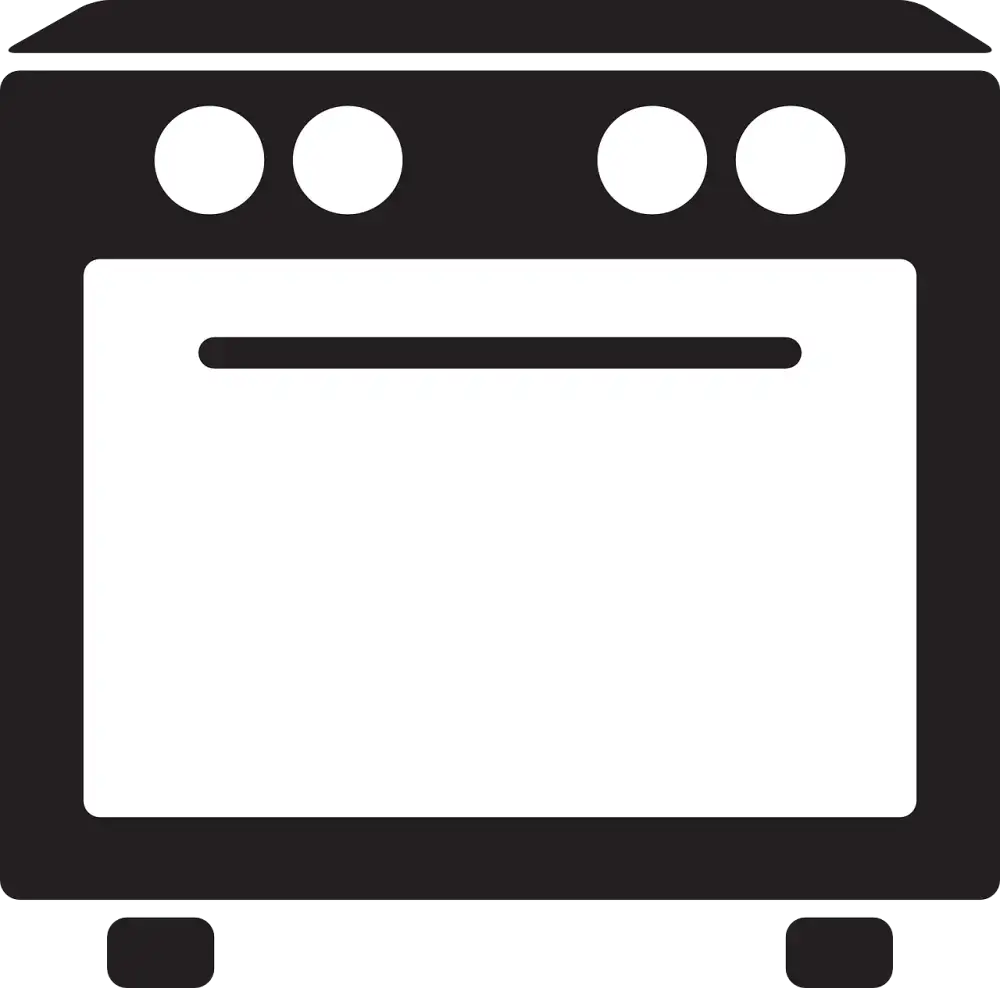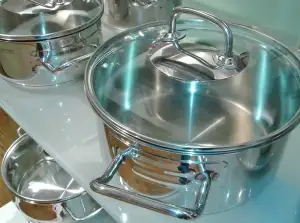Mastering the Art of Using a Convection Oven: A Step-by-Step Guide for Your Home

- Understanding the Basics of Convection Cooking
- Preparing Your Convection Oven for Use
- Adjusting Cooking Times and Temperatures
- Utilizing the Convection Setting for Baking
- Using the Convection Setting for Roasting
- Tips for Achieving Perfect Results with a Convection Oven
- Cleaning and Maintaining Your Convection Oven
Convection ovens have revolutionized the way we cook, offering faster and more efficient cooking results. Unlike traditional ovens that rely on radiant heat, convection ovens use a fan to circulate hot air evenly throughout the oven cavity. This constant circulation of hot air ensures that food cooks more quickly and evenly, resulting in deliciously crispy and perfectly cooked dishes. Whether you're a seasoned chef or a novice cook, mastering the art of using a convection oven will elevate your culinary skills to new heights. In this step-by-step guide, we will explore the basics of convection cooking, how to prepare your oven for use, adjust cooking times and temperatures, utilize the convection setting for baking and roasting, achieve perfect results, and maintain your convection oven for years of flavorful escapades in the world of food delights. So let's dive in and discover the wonders of cooking with a convection oven!
Understanding the Basics of Convection Cooking
Convection cooking is a method that utilizes the circulation of hot air inside the oven to cook food faster and more evenly. Unlike traditional ovens, which rely on radiant heat, convection ovens have a fan that continuously circulates the hot air, resulting in faster cooking times.
The circulating air in a convection oven helps to distribute heat evenly around the food, ensuring that it cooks uniformly. This means no more unevenly cooked dishes with burnt edges and undercooked centers.
Convection cooking also allows for lower cooking temperatures compared to conventional ovens. The circulating hot air transfers heat more efficiently, so you can reduce the temperature by about 25 degrees Fahrenheit (15 degrees Celsius) and still achieve the same results.
It's important to note that not all recipes are suitable for convection cooking. Delicate baked goods like soufflés or custards may not fare well in a convection oven due to the intense airflow. However, most recipes can be easily adapted by reducing the cooking time or temperature.
By understanding the basics of convection cooking, you can take full advantage of your convection oven and enjoy faster, more even cooking results.
Preparing Your Convection Oven for Use
Before you start using your convection oven, it's important to prepare it properly. First, remove any packaging materials and stickers from the oven. Then, give it a thorough cleaning with warm soapy water to remove any residue or dirt.
Next, check the oven racks and make sure they are properly positioned. Most convection ovens have multiple rack positions, so adjust them according to the type of food you'll be cooking.
Once the oven is clean and the racks are in place, preheat the oven to the desired temperature. This step is crucial as it allows the oven to reach its optimal cooking temperature before you start cooking.
While preheating, take this time to familiarize yourself with the control panel and settings of your convection oven. Each model may have different features and options, so read the manual if needed.
Lastly, ensure that there is enough space around the oven for proper air circulation. Convection ovens rely on airflow to evenly distribute heat, so avoid placing any objects or blocking vents that could hinder this process.
By following these simple steps, you'll be ready to unleash the full potential of your convection oven and embark on a culinary journey like no other.
Adjusting Cooking Times and Temperatures
One of the key benefits of using a convection oven is its ability to cook food faster than a traditional oven. However, this also means that you need to adjust your cooking times and temperatures accordingly.
When using a convection oven, it is recommended to reduce the cooking temperature by about 25 degrees Fahrenheit compared to what the recipe suggests for a conventional oven. This is because the hot air circulation in a convection oven cooks food more efficiently.
In terms of cooking times, you can typically reduce the cooking time by about 25% when using the convection setting. For example, if a recipe calls for baking something for 40 minutes in a regular oven, you would only need to bake it for around 30 minutes in a convection oven.
It's important to keep an eye on your food as it cooks and make adjustments as needed. Since convection ovens cook food faster, there is a higher risk of overcooking if you don't monitor it closely.
By adjusting your cooking times and temperatures properly, you can ensure that your dishes come out perfectly cooked every time with your convection oven.
Utilizing the Convection Setting for Baking
One of the greatest advantages of a convection oven is its ability to bake foods evenly and quickly. When using the convection setting for baking, there are a few key steps to keep in mind.
First, always preheat your oven before baking. This ensures that the oven reaches the desired temperature and allows for consistent cooking throughout. Set the temperature according to your recipe, but remember that you may need to reduce it by about 25 degrees Fahrenheit when using convection.
Next, choose the right bakeware. Opt for light-colored pans with low sides, as they allow for better air circulation and even browning. Avoid using dark or nonstick pans, as they can absorb more heat and cause over-browning.
Once your oven is preheated and your batter or dough is ready, place your baked goods on a wire rack positioned in the center of the oven. This allows hot air to circulate around them evenly.
Keep an eye on your baking time. With convection baking, you may need to reduce the cooking time by about 25%. However, it's essential to check for doneness regularly using a toothpick or cake tester inserted into the center of your baked goods.
Remember that convection ovens tend to cook faster than traditional ovens, so it's crucial not to overcook your baked goods. Keep a close watch during the final minutes of baking to avoid any burning or drying out.
By utilizing the convection setting for baking, you'll enjoy perfectly golden crusts, evenly cooked centers, and shorter cooking times. Experiment with different recipes and adjust temperatures and times accordingly until you find what works best for you. Happy baking!
Using the Convection Setting for Roasting
Roasting is a popular cooking method that brings out the natural flavors of meats and vegetables. With a convection oven, you can achieve even better results by utilizing the convection setting.
To roast using a convection oven, start by preheating it to the recommended temperature for your recipe. Then, place your meat or vegetables on a roasting rack or in a shallow pan. The elevated position allows hot air to circulate evenly around the food.
Next, set your convection oven to the desired temperature and cooking time. Keep in mind that convection cooking typically requires lower temperatures and shorter cooking times than traditional ovens. Refer to your recipe or use a conversion chart to adjust accordingly.
Once you've set the temperature and time, let the convection oven do its magic. The circulating hot air will ensure that your food cooks evenly from all sides, resulting in a crispy exterior and moist interior.
Remember to periodically check on your food during roasting. Use a meat thermometer to ensure it reaches the desired internal temperature for safety and doneness.
When using the convection setting for roasting, you may notice that your food cooks faster than expected. Keep an eye on it to prevent overcooking or drying out.
Lastly, allow your roasted dish to rest before serving. This allows the juices to redistribute, resulting in more flavorful and tender meat.
By using the convection setting for roasting, you'll achieve deliciously golden brown meats and perfectly caramelized vegetables every time. Experiment with different recipes and ingredients to discover new flavor combinations that will impress your family and friends.
Tips for Achieving Perfect Results with a Convection Oven
1. Use the right cookware: Opt for shallow, metal pans with low sides to allow hot air to circulate evenly around the food. Avoid using glass or ceramic dishes, as they may hinder proper airflow.
2. Preheat properly: Always preheat your convection oven before cooking. This ensures that the oven is at the desired temperature and helps in achieving even cooking results.
3. Monitor cooking times: Since convection ovens cook faster than traditional ovens, keep a close eye on your food to prevent overcooking. Start checking for doneness a few minutes earlier than you would with a conventional oven recipe.
4. Reduce cooking temperatures: Lower the recommended temperature by about 25 degrees Fahrenheit when using a convection oven. This adjustment compensates for the efficient heat distribution and prevents overcooking.
5. Rotate and rearrange: To ensure even browning and cooking, rotate your pans halfway through the cooking process. Additionally, if you're baking multiple trays of cookies or roasting multiple dishes, switch their positions to guarantee consistent results.
6. Avoid overcrowding: Allow enough space between items on baking sheets or in roasting pans to allow hot air to circulate freely. Overcrowding can lead to uneven cooking and longer cooking times.
7. Keep an eye on moisture levels: Convection ovens tend to dry out food more quickly due to the constant airflow. To retain moisture, cover dishes with foil or use a water bath when necessary.
8. Use lower-sided pans for baking: When baking cakes or bread, choose pans with lower sides to prevent interference with the convection airflow and promote better rising.
By following these tips, you'll be able to harness the full potential of your convection oven and achieve perfect results every time you cook or bake!
Cleaning and Maintaining Your Convection Oven
Cleaning and maintaining your convection oven is essential to ensure its longevity and optimal performance. Here are some tips to keep your oven in top shape:
1. Regularly clean the interior of the oven using a mild detergent and warm water. Avoid using abrasive cleaners or scrub brushes that can damage the oven's surface.
2. Remove any food spills or debris immediately after each use to prevent them from becoming stubborn stains.
3. Clean the oven racks separately by soaking them in warm, soapy water. Scrub off any residue with a non-abrasive sponge or brush before rinsing and drying them thoroughly.
4. Wipe down the exterior of the oven with a damp cloth to remove any grease or fingerprints. Avoid using harsh chemicals that may damage the finish.
5. Check and clean the oven's ventilation system regularly to ensure proper airflow and prevent any build-up of grease or debris.
6. Inspect the door gasket for any signs of wear or damage. If necessary, replace it to maintain a tight seal and efficient cooking.
7. Schedule professional maintenance at least once a year to ensure all components are functioning correctly, including fans, heating elements, and temperature sensors.
By following these cleaning and maintenance practices, you can enjoy your convection oven for years to come while ensuring delicious meals every time you cook!
In conclusion, mastering the art of using a convection oven can greatly enhance your cooking experience at home. By understanding the basics of convection cooking and properly preparing your oven for use, you can achieve faster and more even cooking results. Adjusting cooking times and temperatures will ensure that your dishes are cooked to perfection every time. Whether you're baking or roasting, utilizing the convection setting will give you delicious and professional-quality results. With a few tips and tricks, you'll be able to enjoy the benefits of a convection oven, such as shorter cooking times, energy efficiency, and superior flavor and texture. So go ahead, explore the world of culinary delights with your convection oven and elevate your home-cooked meals to a whole new level!
Published: 18. 12. 2023
Category: Home



